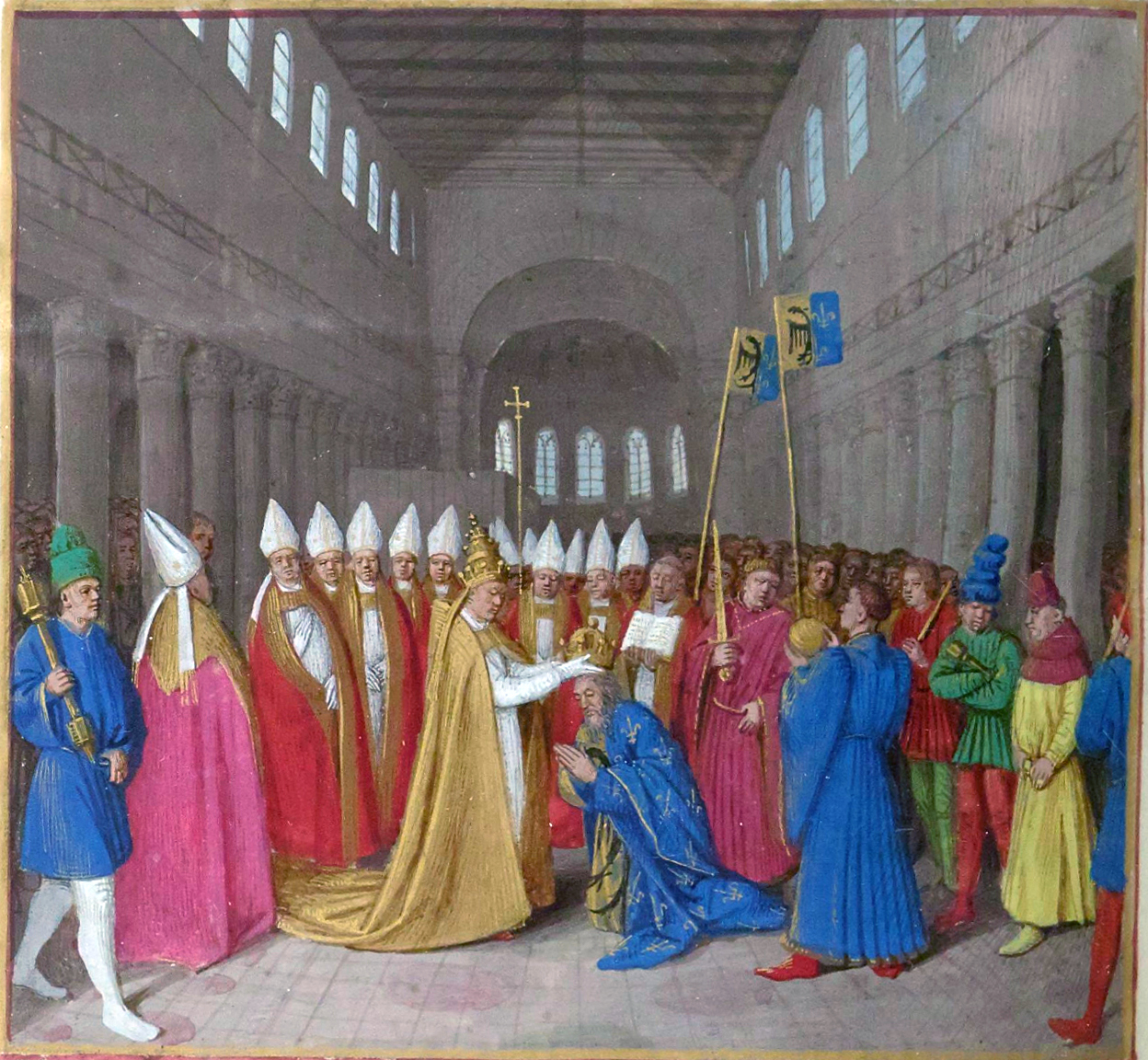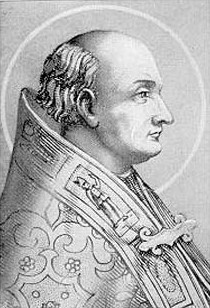Charlemagne was King of the Franks. Charlemagne, means Charles the Great, and was mainly known as Charles I. Charlemagne was both a historical and legendary figure. There are several areas in which the legend contradict with the historical Charlemagne. Even historical account may exaggerate Charlemagne's achievement, in many cases.
Charlemagne was the son of Pepin III, who was also known as Pepin the Short. He was the brother of Carolman and Gisela. Originally, Pepin was a Mayor of the Palace for the dynasty known as the Merovingians. The Mayor of Palace helded great power, sometime the mayors had more powers than the kings; such Pepin. In AD 751, Pepin crowned himself as king of the Franks. Pepin started a new dynasty, known as the Carolingians.
At Pepin's death in AD 768, the kingdom was divided into two for Charles and Carolman. However rivalry between two brothers escalated into conflict, and ended with Carolman's death in 771. ThusAs a result of this, Charles became the sole ruler of the Franks. (Book Internet)
Charlemagne was the son of Pepin III, who was also known as Pepin the Short. He was the brother of Carolman and Gisela. Originally, Pepin was a Mayor of the Palace for the dynasty known as the Merovingians. The Mayor of Palace helded great power, sometime the mayors had more powers than the kings; such Pepin. In AD 751, Pepin crowned himself as king of the Franks. Pepin started a new dynasty, known as the Carolingians.
At Pepin's death in AD 768, the kingdom was divided into two for Charles and Carolman. However rivalry between two brothers escalated into conflict, and ended with Carolman's death in 771. ThusAs a result of this, Charles became the sole ruler of the Franks. (Book Internet)

Charlemagne became involved in a series of campaigns or wars, to expand his kingdom. He fought in the war against the pagan kingdom of Saxony. When he received their surrender, he forced the Saxons to become Christians or else they were killed. In 778, he entered to Spain, with the intention to help a Moorish king to end the uprising. However he failed to capture Saragossa, and thus returned to France. On hsi way to France his rearguard was ambushed at Rencesvals. They were attacked by Gascons and Basques. Einhard only listed among the dead: Anselm, Count Palatine; Eggihard, the King's steward; and Roland, Lord of the March of Brittany.
Charles had to quell a rebellion among the Saxons, where he executed over 4000 Saxons as example in 782. There was sporadic rebellions over 22 years. One of his sons, Pepin, plotted against Charles, during his campaign against the Avars. When this conspiracy was uncovered, he forced his son to take up a monastery life.

It was Charlemange who helped the Roman church to break away completely from those church of the eastern Byzantine Empire. As a result, when he went to Rome, Pope Leo III crowned him as the Holy Roman Emperor. It wasn't until 812, when Michael I recognised Charlemange as Emperor of the West.

His rule is also associated with the Carolingian Renaissance, a revival of art, religion, and culture through the medium of the Catholic Church. Through his foreign conquests and internal reforms, Charlemagne helped define both Western Europe and the Middle Ages. He is numbered as Charles I in the regnal lists of France, Germany, and the Holy Roman Empire. (Book Internet)
1 comment:
5,5,5,5,5,7
Post a Comment